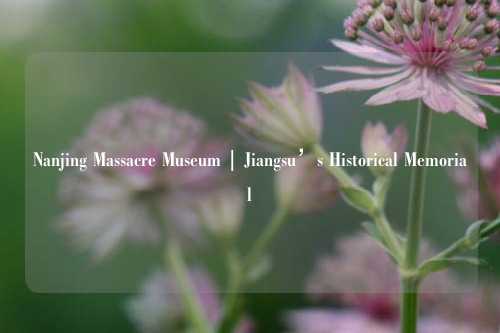Nanjing Massacre Museum | Jiangsu’s Historical Memorial
A Memorial Honoring History
The Nanjing Massacre Museum stands as a solemn reminder of one of the darkest chapters in modern history. Located in Nanjing, Jiangsu Province, this museum was established to commemorate the victims of the atrocities committed during the Nanjing Massacre of 1937. The site serves as a place for education, reflection, and historical preservation. Visitors from around the world come to gain insight into this significant historical event and to pay their respects to those who lost their lives.
The Architecture Reflecting Remembrance
The museum’s design plays a significant role in evoking a sense of solemnity. The exterior, constructed with dark stone, mirrors the somber tone of the museum’s purpose. The layout incorporates symbolic elements, including sculptures and structures that reflect sorrow, loss, and resilience. A large memorial wall inscribed with the estimated number of victims emphasizes the scale of the tragedy.

Upon entering, visitors pass through an open plaza leading to a series of exhibition halls. The thoughtful design of the pathways, lighting, and spatial arrangement creates an atmosphere that encourages reflection. Water features within the site serve as symbols of mourning, while the minimalist approach to decoration ensures that the focus remains on the historical narrative.
Preserving Firsthand Accounts
One of the most significant aspects of the museum is its collection of survivor testimonies. These firsthand accounts, presented through video interviews, written records, and photographs, provide an unfiltered glimpse into the suffering endured by victims and their families. The inclusion of personal stories adds a human dimension to the historical facts, allowing visitors to connect emotionally with the past.
The museum also houses wartime diaries, official documents, and letters from foreign witnesses who were in Nanjing at the time. These records help construct an accurate timeline of events and shed light on the efforts of individuals who tried to protect civilians. The extensive documentation ensures that the tragedy is neither forgotten nor distorted.
Exhibitions Depicting Historical Realities
Inside the museum, exhibitions are arranged chronologically to guide visitors through the sequence of events. Large-scale photographs, preserved artifacts, and digital reconstructions present a detailed account of the massacre. Each section delves into different aspects of the tragedy, from the military invasion to the impact on the local population.
Artifacts on display include personal belongings of victims, military gear used by the invading forces, and clothing retrieved from mass graves. These physical remnants serve as tangible evidence of the suffering endured. The museum also features multimedia presentations, such as animated maps and historical footage, that help contextualize the events within the broader framework of World War II.
The Site of the Mass Graves
A significant portion of the museum grounds includes excavated mass graves where thousands of victims were buried. Visitors can view skeletal remains preserved as part of the memorial, emphasizing the scale of the atrocity. The presentation of these remains is conducted with dignity, ensuring that the site remains a place of remembrance rather than mere historical observation.
The museum also features sculptures and monuments dedicated to those who perished. These artistic tributes convey grief and remembrance, with many statues depicting mourning figures, broken families, and scenes of suffering. The memorial extends beyond historical education, serving as a powerful statement against violence and war.
The International Response and Efforts for Peace
A section of the museum is dedicated to the international response during and after the massacre. This includes records of diplomats and foreign residents in Nanjing who risked their lives to establish a safety zone for civilians. The contributions of figures such as John Rabe, a German businessman who played a critical role in protecting refugees, are highlighted.
The museum also places a strong emphasis on peace advocacy. Through educational initiatives, it aims to promote reconciliation and prevent future atrocities. Messages of peace are inscribed throughout the museum, reminding visitors that history must be remembered to ensure that similar tragedies are not repeated.
A Place of Reflection and Learning
The Nanjing Massacre Museum is more than a historical archive—it is a space for collective mourning, remembrance, and learning. The atmosphere within its halls encourages visitors to reflect on the consequences of war and the importance of preserving human dignity. School groups, researchers, and international visitors frequent the site to gain a deeper understanding of this pivotal moment in history.
As visitors exit the museum, they pass through a final exhibit dedicated to hope and peace. This concluding section emphasizes the resilience of the survivors and the importance of historical truth. It serves as a reminder that while the past cannot be changed, the future can be shaped through awareness and understanding.
















